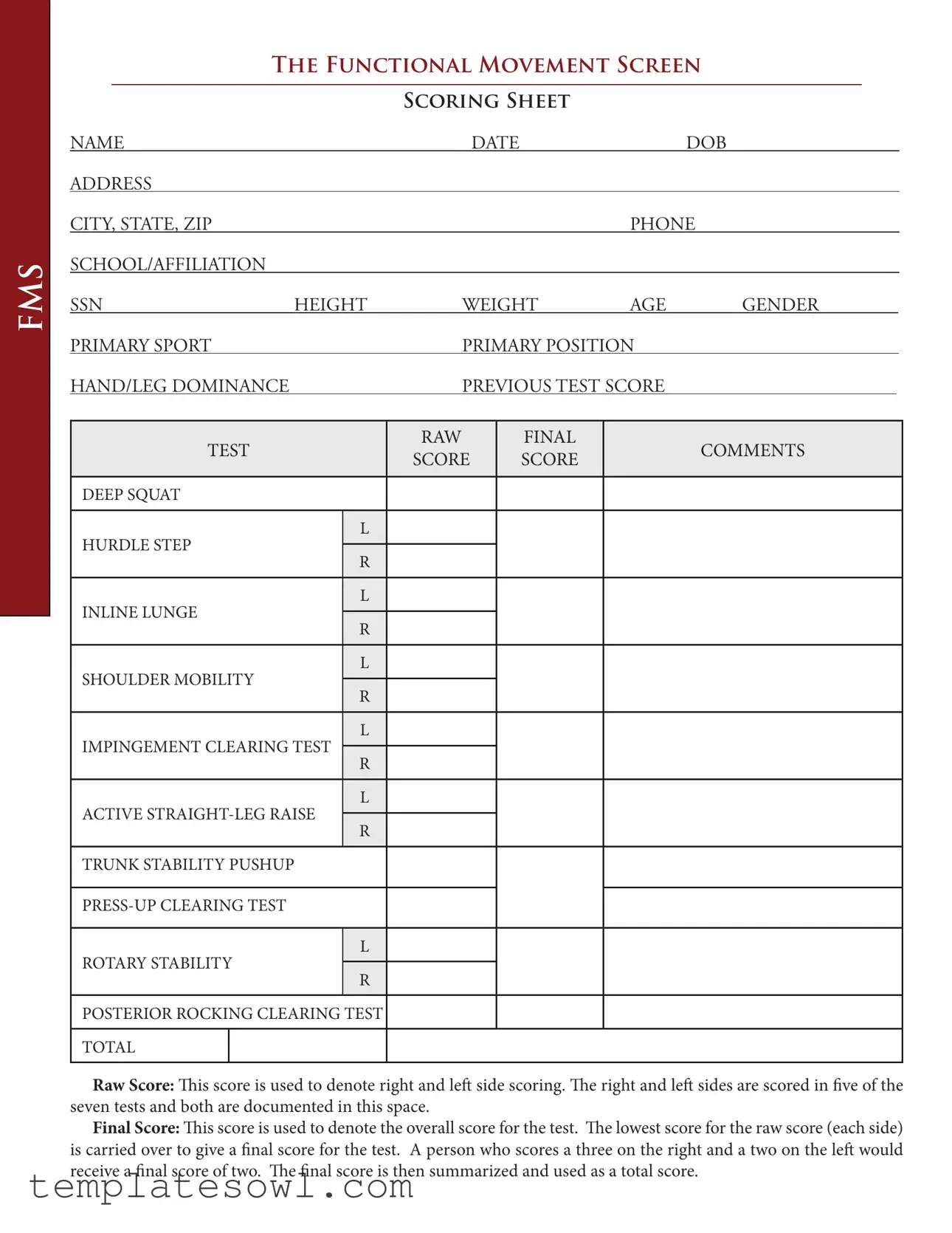What is the purpose of the Functional Movement Screen (FMS)?
The Functional Movement Screen is designed to assess functional movement patterns, identify limitations, and evaluate potential injury risks. It helps to establish a baseline for physical performance and guides practitioners in creating personalized training programs. Understanding how the body moves can enhance athletic performance and reduce the chance of injury over time.
How is the FMS test conducted?
The FMS involves a set of seven tests that evaluate different aspects of movement. These include deep squats, hurdle steps, inline lunges, shoulder mobility, active straight-leg raises, trunk stability push-ups, and rotary stability. Each test is scored based on specific criteria, and both sides of the body are assessed to provide a comprehensive view of functional capabilities and imbalances.
What do the scores on the FMS indicate?
Scores range from 0 to 3 for each test, with zero indicating pain during movement. A score of three signifies optimal performance. The lowest score from each side is taken for the final score of each test, which is then summarized into a total score. This total score helps to determine areas of strength and those needing improvement.
Who should take the FMS?
The FMS is beneficial for athletes of all levels, trainers, coaches, and rehabilitation professionals. It can also be useful for individuals looking to improve their fitness levels or recover from injuries. Anyone interested in understanding their movement patterns can gain valuable insights from the FMS.
What can I do with the FMS results?
Your FMS results can inform training and rehabilitation strategies. By identifying specific weaknesses or imbalances, you can tailor exercises and prevent potential injuries. Coaches and trainers can develop focused conditioning programs to enhance performance based on these scores.
How often should the FMS be repeated?
Reassessing with the FMS is advisable on a regular basis—typically every 6 to 12 months. This allows for monitoring progress and adjusting training plans as necessary. Frequent assessments can also help to identify any emerging issues before they become problematic.

